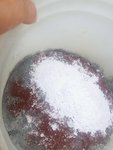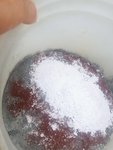NaoTK
Chumono
Hey all,
I am obsessed with replicating authentic Japanese and Chinese clay bodies, such as Yixing purple clay and Tokoname clay. This thread is capturing my progress and I welcome your input.
The qualities of a good Asian clay body as I see it are:
1. High smoothness and burnish capability. So this means little or no grog and sand
2. Depth of color and subtle variation. This means no artificial oxides or colorants, only natural clay sources for color
3. High maturation temp and low porosity (cone 8-10)
4. Good color response in flame
5. Low shrinkage and warp, glaze fit
6. Good throwing qualities
It was rather challenging to hit all those points. I began with a number of American and Canadian raw clay materials and just iterated for 2 years.
2018-2019: I developed a number of different recipes
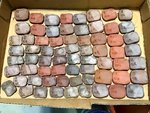
2020 July candidate: 20" oval. This clay has the best working properties with moderate color response. I didn't burnish this one but I will make another and it should take a high shine and remove the roughness (August/sept)

2019 candidate with high boron content. This one has the worst working properties but best color. It shrinks terribly and cannot be thrown.
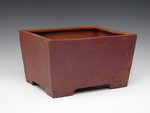
Unburnished 2020 candidate
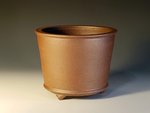
Still fine tuning the recipes. I will do another run for August with burnishing and also some more slab forms. stay posted!
I am obsessed with replicating authentic Japanese and Chinese clay bodies, such as Yixing purple clay and Tokoname clay. This thread is capturing my progress and I welcome your input.
The qualities of a good Asian clay body as I see it are:
1. High smoothness and burnish capability. So this means little or no grog and sand
2. Depth of color and subtle variation. This means no artificial oxides or colorants, only natural clay sources for color
3. High maturation temp and low porosity (cone 8-10)
4. Good color response in flame
5. Low shrinkage and warp, glaze fit
6. Good throwing qualities
It was rather challenging to hit all those points. I began with a number of American and Canadian raw clay materials and just iterated for 2 years.
2018-2019: I developed a number of different recipes

2020 July candidate: 20" oval. This clay has the best working properties with moderate color response. I didn't burnish this one but I will make another and it should take a high shine and remove the roughness (August/sept)

2019 candidate with high boron content. This one has the worst working properties but best color. It shrinks terribly and cannot be thrown.

Unburnished 2020 candidate

Still fine tuning the recipes. I will do another run for August with burnishing and also some more slab forms. stay posted!


